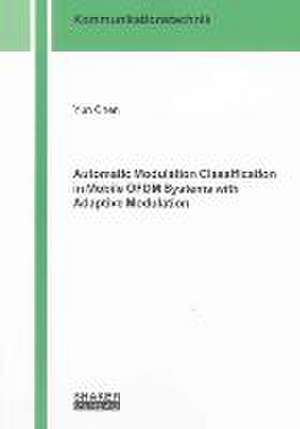Automatic Modulation Classification in Mobile OFDM Systems with Adaptive Modulation
Autor Yun Chenen Limba Engleză Paperback – 9 feb 2014
Preț: 278.31 lei
Nou
Puncte Express: 417
Preț estimativ în valută:
53.25€ • 55.60$ • 44.07£
53.25€ • 55.60$ • 44.07£
Carte indisponibilă temporar
Doresc să fiu notificat când acest titlu va fi disponibil:
Se trimite...
Preluare comenzi: 021 569.72.76
Specificații
ISBN-13: 9783844025255
ISBN-10: 3844025251
Pagini: 161
Dimensiuni: 149 x 211 x 15 mm
Greutate: 0.23 kg
Editura: Shaker Verlag
ISBN-10: 3844025251
Pagini: 161
Dimensiuni: 149 x 211 x 15 mm
Greutate: 0.23 kg
Editura: Shaker Verlag
